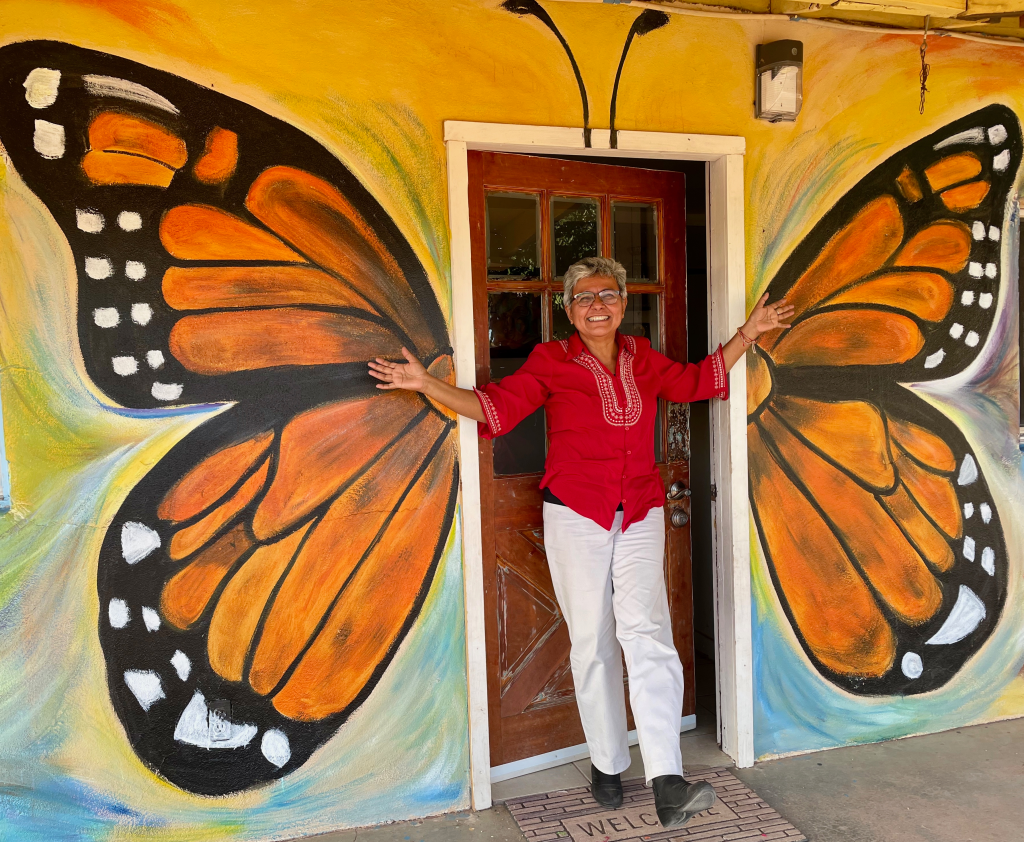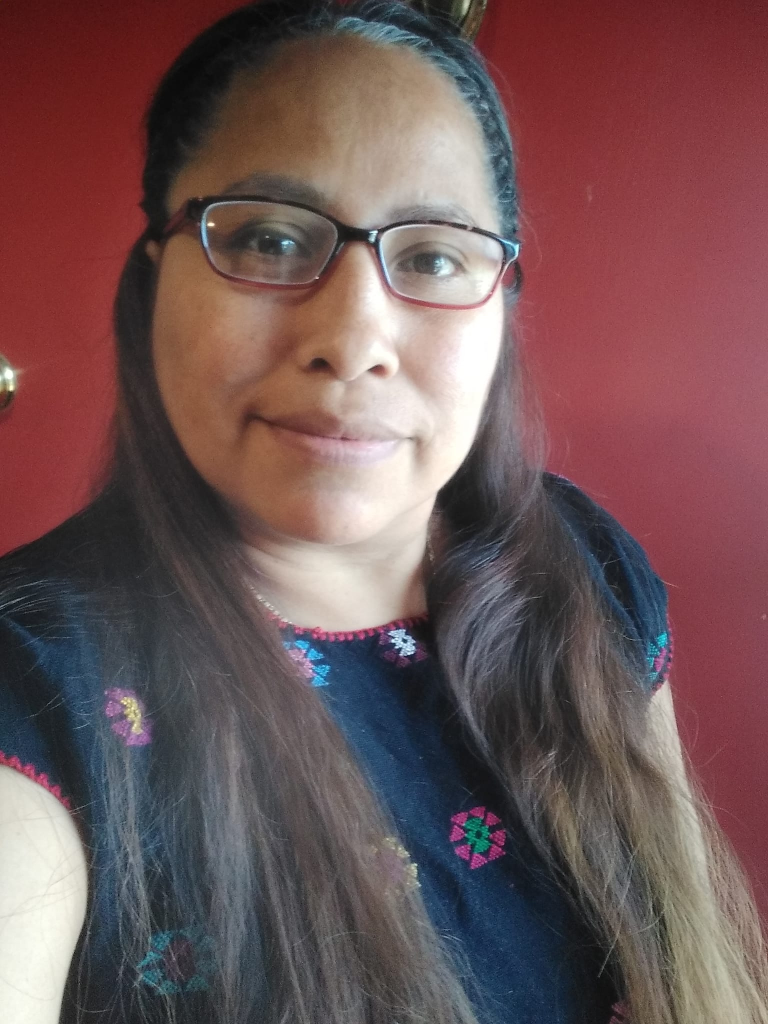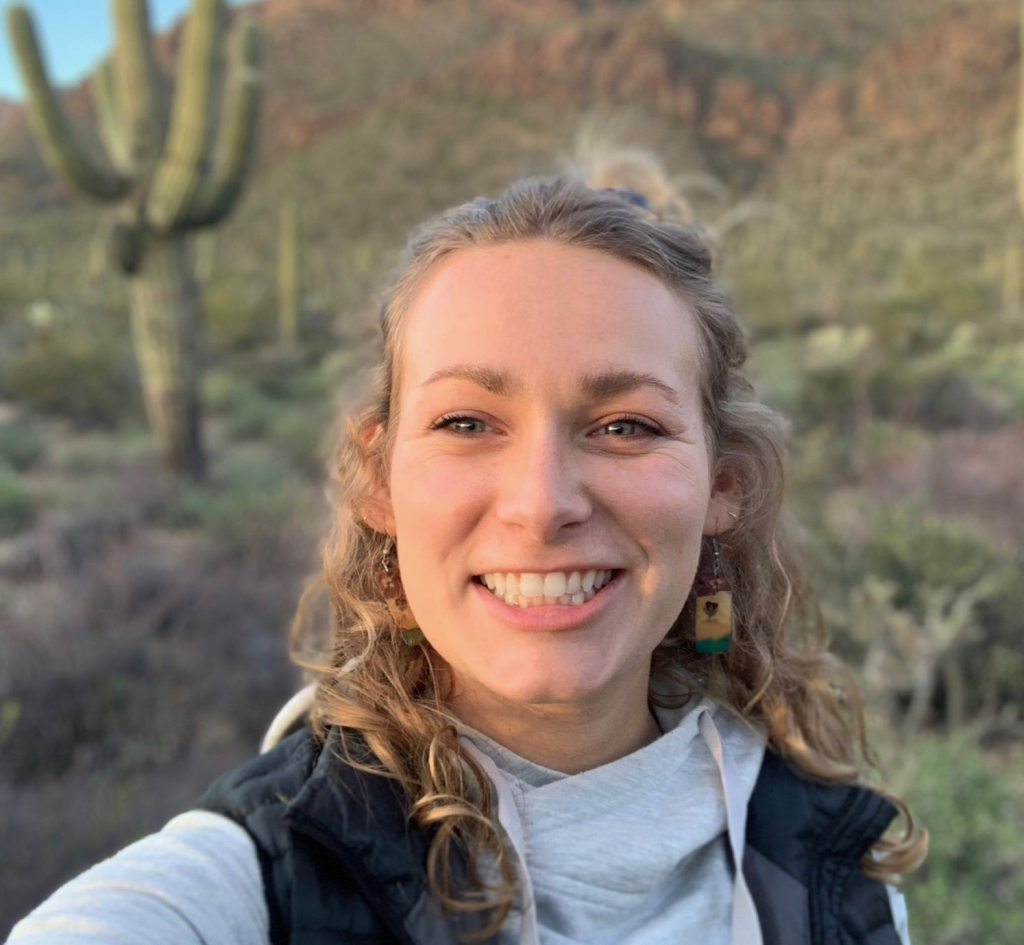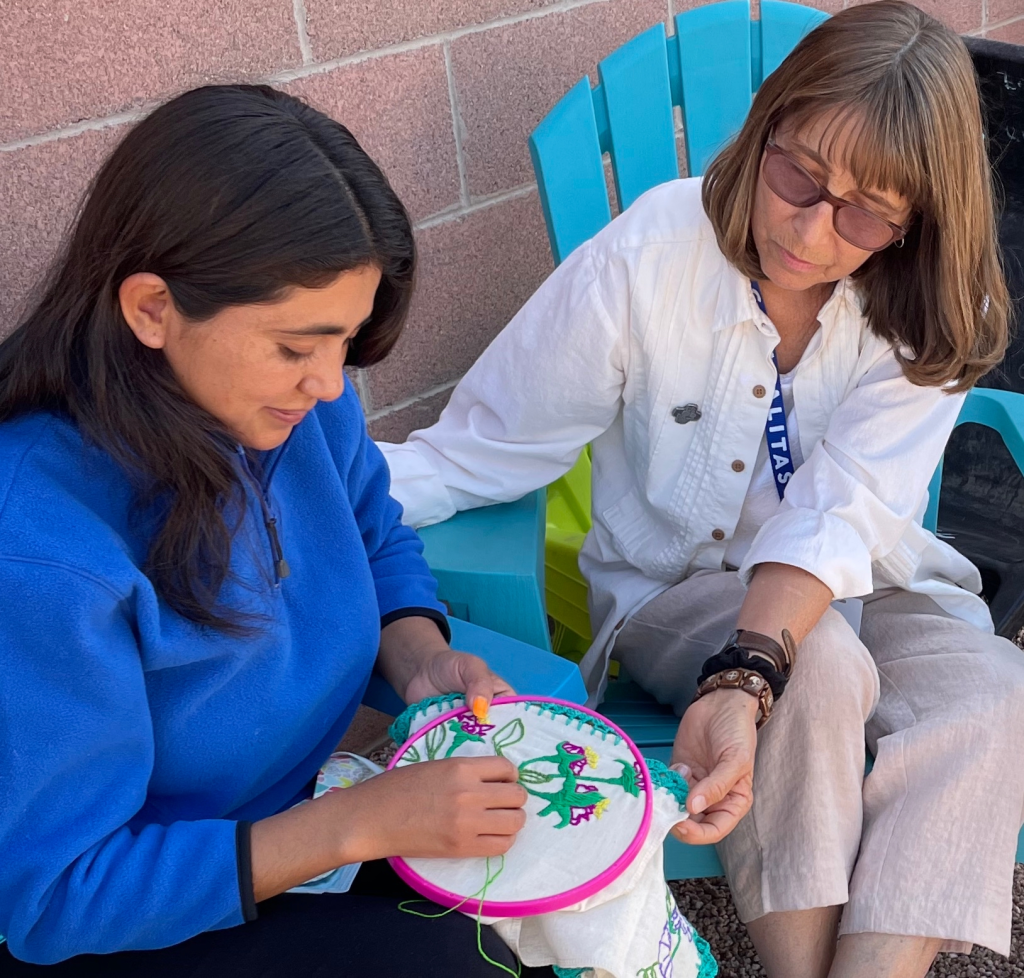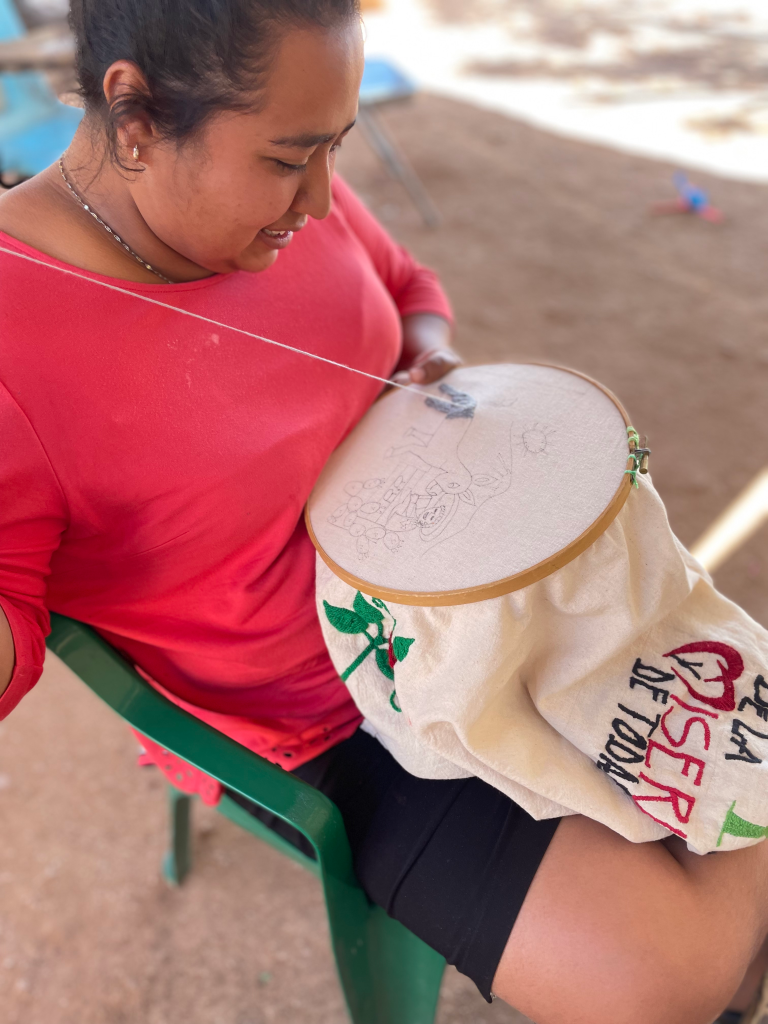Spring/Summer 2022
It has been a busy season for Artisans Beyond Borders. The top story in June is Artisans Beyond Border’s Binational ZOOM panel on “Adaptation with Migration” for W.A.R.P. (Weaving a Real Peace), the International networking organization for Textile Artisans and their initiatives. We lead off a number of fabulous panels, with wonderful presenters from all over the world that you don’t want to miss if you can help it. Panels on Saturday, June 25, and Sunday, June 26 are FREE, open to everyone, and easy to register. (Scroll down that page to see all the rest of the presenters and descriptions of their panel discussions).
Adaptation with Migration
Panel Discussion with Artisans Beyond Borders
Saturday, June 25th at 12:30 pm US Eastern Time
“Every day around the world, people make one of the most difficult decisions in their lives: to leave their homes in search of a safer, better life. At la Casa de la Misericordia y Todas Naciones – the House of Mercy and all Nations, asylum seekers at the US-Mexico border have a safe place to wait for entry to the US. There, Artisans Beyond Borders supports bordadoras (embroiderers) and tejedoras (weavers). Through the acts of weaving, stitching, and crocheting, these artisans create a piece of home in this new, unknown place. Artisans Beyond Borders and their non-profit partners in Mexico help restore grace and agency through traditional handwork, solidarity among the artisans, and respect for cultural and familial arts across borders.
The binational Artisans Beyond Borders also works with embroiderers and weavers newly arrived in the U.S., who are legally petitioning for asylum after waiting months, even years, at the U.S.-Mexico border. One of the first things often lost in migration is one’s own cultural and familial art, resulting in deep cultural bereavement and deculturation. What are Artisans Beyond Borders and their partners doing to preserve our new neighbors’ maker tradition(s)? On this panel, we will hear the stories of Artisans Beyond Borders, their partners, and the artisans themselves. We will discover why upholding handmade cultural and familial arts – pre-and post-migration – is critical now to all of us moving forward.”
Panelists:
Sister Lika Macias is the executive director of la Casa de la Misericordia y Todas Naciones – the House of Mercy and all Nations, a migrant led shelter in Nogales, Mexico. Hermana Lika is a respected and skilled community leader who believes strongly in the power of art to heal, comfort, and foster solidarity amongst the shelter’s residents. Recently, Sister Lika and staff established a Maker space at the shelter for the resident embroiderers, weavers, and sewers. A talented painter in her own right, Sister Lika studied traditional iconography in Rome, South America, and Russia.
Esmerelda Ibarra, an indigenous embroiderer from Guerrero, Mexico, is a leading voice in the Save Asylum movement advocating for human rights and the dignity of indigenous people. Esmerelda worked with Artisans Beyond Borders while she and her family were stranded at the U.S. Mexico border for almost two years, and now in the U.S. as she and her family await asylum. Esmerelda’s indigenous embroidery, carried by the United Nations Association Center in Tucson, has also inspired the Global Initiatives program at the Parsons School of Design. “At the border, I was able to embroider again and it made me remember my beautiful childhood. It brings me love and much tranquility inside my heart,” she says.
As the Border and Migration Outreach Coordinator for the West Coast Mennonite Central Committee and the co-coordinator of Arizona’s Casa Mariposa Detention Visitation Program, Katherine Smith is dedicated to working with asylum seekers and teaching others about immigration and border realities. After college, Kat spent a year volunteering with the Women’s Co-op ANADESA in Santiago Atitlán, Guatemala and lived with her host family of traditional embroiderers. Back in the States, she served as the Site and Volunteer Coordinator for Casa Alitas (House of Wings), Tucson’s lead Migrant Shelter, and now she works closely with Artisans Beyond Borders leading the U.S. Support team for las bordadoras (the embroiderers) who are legally awaiting asylum in the U.S.
Panel Moderator: Valarie James, the founder of Artisans Beyond Borders, affirms art, faith, and social justice in the U.S.-Mexico Borderlands. As an artist and writer, James is best known for collaborative public art in Tucson including Las Madres: No Más Lágrimas (No More Tears), The Migrant Shrine at Southside, and the installation ‘Hardship and Hope at the U.S. Mexico Border’ at the Museum of World Culture in Gothenburg, Sweden. As a retired Clinical Art Therapist, James led the trauma-informed arts & activities at Tucson’s Casa Alitas Migrant shelter and she is currently the lead curator for the artisans’ traveling exhibition Bordando Esperanza – Embroidering Hope: Retablos of Asylum. Writings on arts and immigration can be found at Art and Faith in the Desert
In the last 4 months, the Artisans Beyond Borders exhibition Embroidering Hope ~ Bordando Esperanza has traveled from the Good Shepherd UCC Church in Sahuarita, Arizona to the University of Southern California, to St. Marks Episcopal in Columbus, Ohio.
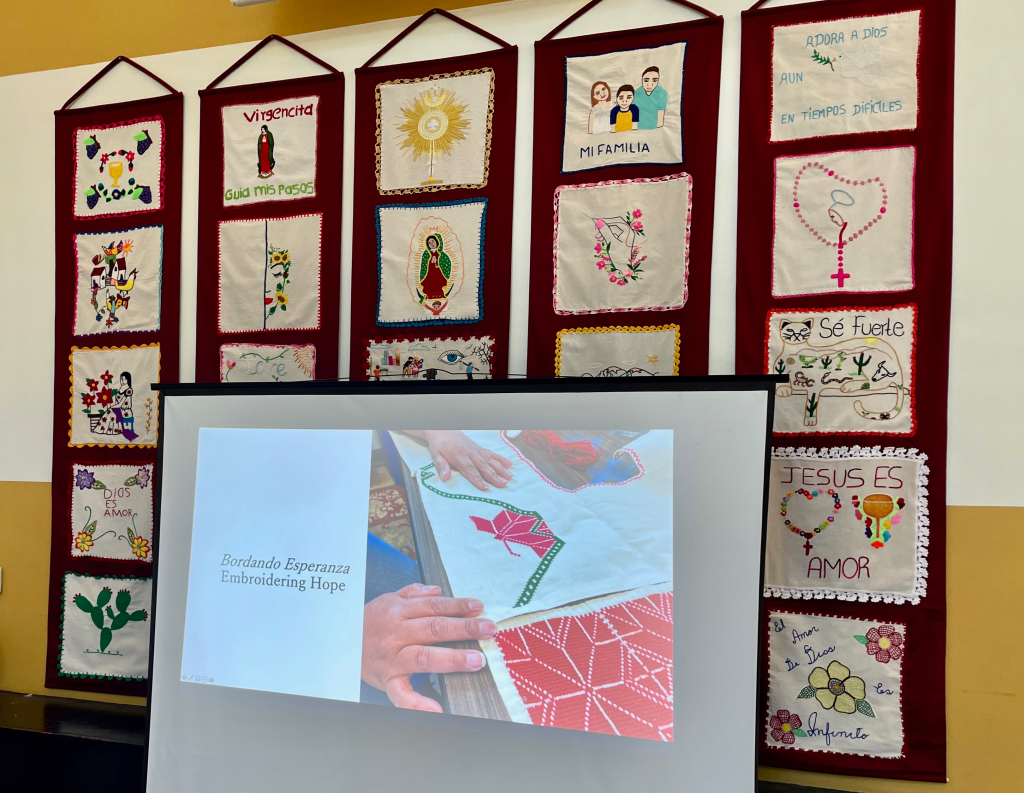
April 2022, University Religious Center,
University of Southern California
Carrying the soul and the stories of the makers, the exhibition has been beautifully received. Spend time with any of the 75 original mantas, especially the bordados devocionales – the devotional embroideries, and you may find yourself slipping into Visio Divina, the ancient Benedictine way of “listening with the ear of your heart.” Email: contact@ArtisansBeyondBorders to book the exhibition at your University or house of worship.
Seeing all the embroidered servilletas on display in the exhibition, I’m transported back to a warm day last winter and the smell of freshly baked buns as they came out of the huge adobe horno built on the land at la Casa de la Misericordia y Todas las Naciones shelter in Nogales, home to many of the artisans while they wait to legally cross the border to apply for asylum.
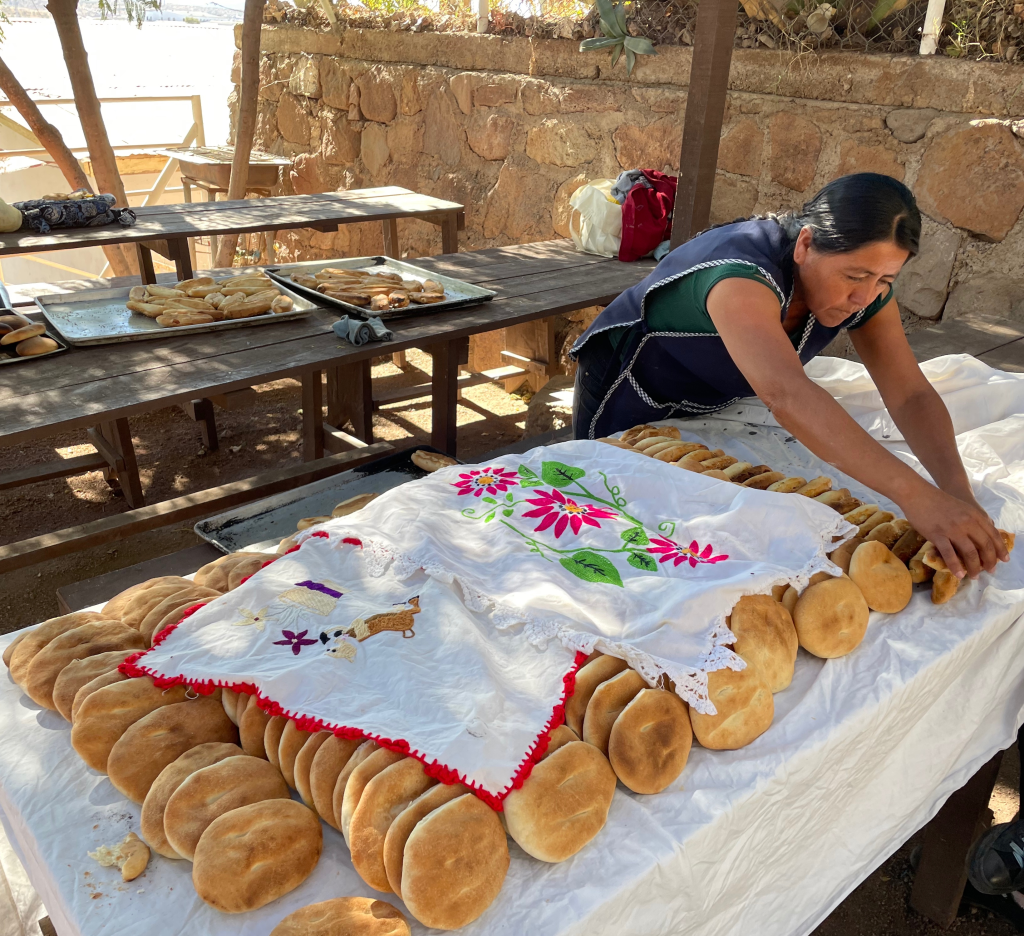
And in case you missed it – A beautiful inspirational Story from the shelter (in English and in Spanish):
Welcome the Weavers – las tejedoras at the U.S. – Mexico Border


